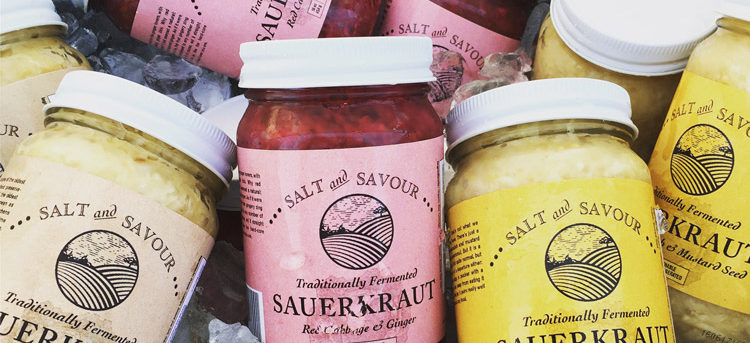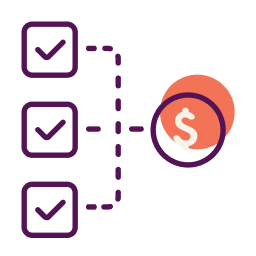What started as a hobby making sauerkraut has grown to a full-fledged business, thanks to passion, a few credit cards, and an interest-free loan.
When David Edmondson started making sauerkraut in his home kitchen in Dunsmuir, Calif., three years ago, he says, “I tasted good sauerkraut for the first time.” He was hooked. He started giving it to friends and family, who raved about it and told him he should sell it. He took their advice “with a grain of salt,” he says, but it did lead him to wonder if there was a market for it.
A Business Is Born
He took a few jars to a local farmers market, where he expected to sell 10 pints. He sold 23. The next week he had some left, so he returned to the same farmers market where he promptly sold out. “That was the start of it,” he says.
He started selling regularly at the farmers market, but quickly realized his equipment would limit his ability to turn it into a full-time venture.
“My production capacity was 30 to 40 pints a month.” he says. “I couldn’t even work a farmers market every week because I didn’t have enough capacity.”
So he started focusing on trying to get the equipment he needed to ramp up production, while navigating the regulatory hurdles of establishing a food-based business.
His first business license allowed him to only sell in his county, but it’s small and one of the poorer counties in California. “Not exactly a great place to sell something high-end,” he says. He wanted to move up to a larger farmers market in Redding, Calif., but it required him to purchase a license for $800—a big investment for him at the time.
He took a leap of faith, obtained the license and Salt and Savour sauerkraut was a hit at the Redding Farmers Market. Sales were strong, he had repeat customers, and he was able to start placing the product in some local stores.
Getting Cash for a Startup
As his business grew, Edmondson needed financing. He turned first to his credit cards, since bank financing is nearly impossible for startups to obtain. That turned out to be expensive since he wasn’t able to pay the balances in full. In fact, he’s still paying them off.
“That was a really tough way to go,” he says. “But you do what you gotta do.”
Then he heard about Kiva through a local economic development group, JEDI, where he was receiving entrepreneurial training and mentoring. They told him Kiva offered interest-free small business loans. He applied for this first Kiva loan in the summer of 2014, with the goal of purchasing equipment to increase production. He shares how it played out for him:
“The first Kiva loan was $5,000, which was the maximum. I was pretty good at social media (Facebook) and that’s almost a requirement. They have an initial stage where they want you to bring in 15 lenders from your own network. Then Kiva posts your story on their website.
I think you had seven days to come in with your 15 lenders. Kiva opened my process at 7:30 a.m. on a Monday morning and I had my 15 lenders by noon. I was fully funded in seven days.”
The process Edmondson describes is Kiva’s unique combination of crowdfunding and microfinance. Kiva borrowers don’t have to have perfect credit; in fact, good credit isn’t required. In order to fundraise on Kiva, borrowers must show they have the support of their community behind them by gathering initial loans from family, friends and other supporters. Kiva calls this “Social Underwriting.”
Edmondson says Facebook was a key reason for his success. “I promoted it relentlessly,” he says. “I think that’s one of the benefits to being in a small town. There’s not a lot of businesses, and when someone starts one everyone seems to get behind it.”
In fact, during that first fundraising campaign, a local health food store offered to finish funding his campaign if he agreed to put product in their store. “At that point they weren’t carrying my product. I couldn’t produce enough,” he explains. “That was part of my dilemma.”
The deal was struck, and now that retailer is his biggest retail client among the 16 that carry his sauerkraut.
He paid back that first interest-free loan in less than two years, and went back for seconds. His second Kiva loan also funded the purchase of equipment to increase production. He wasn’t as aggressive in promoting his campaign, and that process took longer, but again he was successful.
Funding the Next Phase
Salt and Savour continues to grow, though Edmondson says growth is somewhat limited by his time; he is currently running all production himself, while his wife helps out by selling at a farmers market on weekends. He needs to bring on an employee, but he’s not quite there. And he also needs to move from his shared commercial kitchen to his own facility. He’s currently in talks with an investor who may be able to help that happen.
Financing is an ongoing challenge. “I have thought about other financing constantly,” he says. He’s met with local banks and economic development agencies, but while his growth is very positive, the credit card debt holds him back from getting a loan.
As with most small businesses, cash flow is also a constant issue. Most of his retail clients pay in 30 days, but because his sauerkraut is naturally fermented, it can take 60 days or more from the time he’s purchased ingredients to make the product, sell it and get paid by a customer or client. He does get terms from the vendor who sells him his cabbage, which helps some.
He recently switched his credit card processing to PayPal, which he says has offered him funding he can pay back directly from his credit card sales.
Edmondson says his goal now is to “move it out in concentric circles from the home base.”
Only two things stand in the way of continued growth: time and money. With more time and the right equipment he could make more sauerkraut, and continue to grow his customer base. Fortunately, he has a whole community of fans who want to see him succeed as well.
Four Tips for Aspiring Foodpreneurs
Do you want to try to turn your killer recipe into a successful food business? Martin Butts, local food advocate and founder of Small Potatoes, a boutique marketing and consulting firm for food entrepreneurs, offers these four tips:
1. Build a beautiful brand. A lot of food producers sell themselves short by trying to save money on brand identity, he says, and their product doesn’t look as professional as their competition. Work with a professional designer at the beginning.
2. Price right from the start. Many food companies skip serious business planning. They fail to set their price based on what it will cost them to produce their product at scale, and then three or four years down the road they are in trouble. Butts recommends setting an initial price as if you are moving into the more expensive production facilities you will need later. That will also allow you to make more money at the early stages, when you need it.
3. Build social capital. Whether you choose to crowdfund like Edmondson did or not, “social capital” can go a long way toward building your brand. Some businesses even crowdfund as a form of market research and to build buzz for their product. Building your community through social media can make or break a crowdfunding launch, and sometimes even a product launch.
4. Don’t worry about the big boys. There is such a varied and independent vibrant marketplace today, Butts insists, that you don’t have to worry about getting into national big box or supermarket chains. You can build a successful company and let them come to you…or not. “There are successful companies that never go into those stores,” he says.
More answers to pressing questions:
Why Are My Credit Scores Different?
How Often Does My Credit Score Change
Can I Build Business Credit Fast?
What Happens When You Default on a Loan?
This article was originally written on September 7, 2016 and updated on February 5, 2024.


Have at it! We'd love to hear from you and encourage a lively discussion among our users. Please help us keep our site clean and protect yourself. Refrain from posting overtly promotional content, and avoid disclosing personal information such as bank account or phone numbers.
Reviews Disclosure: The responses below are not provided or commissioned by the credit card, financing and service companies that appear on this site. Responses have not been reviewed, approved or otherwise endorsed by the credit card, financing and service companies and it is not their responsibility to ensure all posts and/or questions are answered.